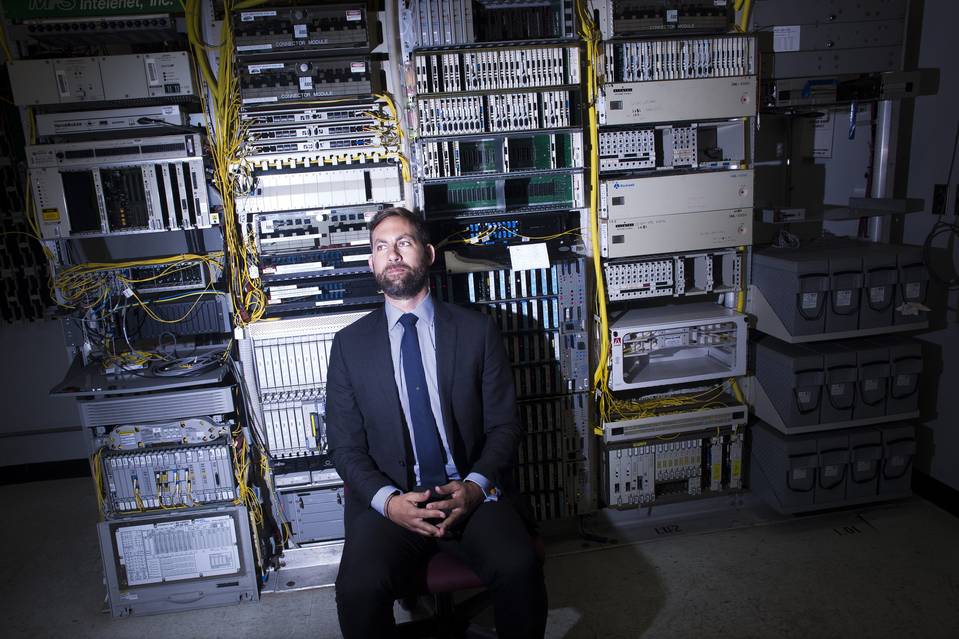July 26, 2015
When the Firm Is Wired but the Office Isn’t
New York’s quirky old loft buildings make cool offices, but connectivity can be primitive
By KEIKO MORRIS
By now, it is a given in New York City that many companies in the tech and advertising sectors prefer older loft buildings in nontraditional office neighborhoods, where they offer millennial workers must-haves such as coffee bars and Ping-Pong tables.
But finding all that in a building with robust Internet options can be tricky to pull off.
Internet capacity can vary widely from building to building, especially in neighborhoods populated with the funky loft spaces coveted by creative firms, technology consultants and brokers said.
“You can’t tell from a pretty lobby or trust somebody’s pitch about the building, no matter how earnest that pitch might be,” said Arie Barendrecht, CEO and co-founder of WiredScore, which evaluates and rates office buildings for the speed and reliability of Internet connections as well as the choice of Internet providers offered. “There are lots of challenges and variation in connectivity, and not all are obvious.”
Some buildings may have limited options from which to choose broadband Internet service providers, and downloading and uploading speeds could be slower than expected. Others may have wiring to the network beneath the street at only one point of entry, with no alternative to serve as a backup if it is damaged. Often the preferred fiber wiring is inside the building but not connected to the tenant’s floor.
Among other concerns is the lack of well-managed, centralized places where new tenants can connect easily to provider networks, said Wes Rudes, executive director at real-estate-services firm Cushman & Wakefield Inc. Access fees that some landlords charge Internet service providers can also dissuade them from wiring buildings.
“We want to provide cost-effective services,” said Shrihari Pandit, co-owner of Stealth Communications, an Internet service provider. “So it makes it difficult for us to enter buildings who ask us to pay fees.”
Anticipating hurdles, tenants like PhotoShelter have become savvy when scouting out new office space.
The 10-year-old company, which offers a digital-archival and management system for large users of photography, plans to give itself plenty of time to find a new office before the lease at its Union Square location expires at the end of next year, said co-founder Jeffrey Arnold. Several years ago, he said, he waited 18 months for the company’s Internet-service provider to install a fiber-optic connection.
While the city’s modern skyscrapers typically have the high-speed connections PhotoShelter needs, “tech businesses like ours generally don’t want to be in those buildings,” said Mr. Arnold, whose staff generally resides in Brooklyn and the Lower East Side. “One of the things we use to hire is the quirkiness of the building.”
To be sure, many of the city’s leading landlords have experience housing large companies with big data needs. They have brought in multiple Internet service providers, carved out space for rooftop wireless connections, and improved their building’s cellular networks, real-estate executives said.
A number of those owners highlight their WiredScore rankings in their marketing to set them apart from competitors.
Older copper wires in the basement of a building in Lower Manhattan PHOTO: JOHN TAGGART FOR THE WALL STREET JOURNAL
The landmarked Empire State Building has a platinum WiredScore rating—the highest level, for its Internet capacity. Completed in 1931, the skyscraper has attracted tenants such as media company Shutterstock Inc. and social-media giant LinkedIn Corp.
“We use all of these different attributes, so tenants have a choice,” said Anthony Malkin, chief executive of Empire State Realty Trust Inc., owner of the Empire State Building. “If you only have one service provider, your tenant could be held hostage.”
In 2013, WiredScore, which has expanded its service to about 50 cities, including London, opened for business with support from the New York City Economic Development Corp. The company lists the ranked certification levels of New York City commercial buildings on its website for businesses to view.
The Economic Development Corp. also maintains an online map of broadband service at commercial buildings in the city, allowing businesses to submit requests for Internet service to as many as a dozen Internet providers. And recently it announced it is working with two Internet service providers to build a broadband network in four industrial business zones, including the southwest Brooklyn and the Greenpoint and Williamsburg industrial sections.
Over time, commercial-property owners across the spectrum are becoming more aware of tenants’ increasing Internet needs.
Brokers now routinely ask about the quality of a building’s Internet connections.
“That’s how you penetrate the consciousness of owners, because they begin to realize it’s a factor in the decision-making process,” said Mary Ann Tighe, chief executive of the New York tri-state region for CBRE Group Inc., a real-estate-services firm.
Caspi Development Co. knew reliable Internet service would be important in luring the tenants it wanted for a revamped, seven-story Lower East Side building it bought and renovated last year. Mounted on a wall in the lobby is a street-level roll gate painted by a graffiti artist, and elsewhere are kitchenettes with beer taps.
The company consulted with WiredScore on what it would take to attain a high certification ranking for the property. Caspi then hired Stealth Communications to wire the building with fiber to every floor and install a fiber connection to its Internet network in the street outside. Caspi also plans to add a high-speed wireless connection to its roof.
Not long after the renovations were completed last fall, Caspi signed leases with new tenants, including tech company Kik Interactive Inc.
“The rating system is definitely a vital piece of leasing agents’ ability to market a building and gain business,” said principal Joshua Caspi. “I don’t think [new tenants] would have come to the building without the fiber.”

